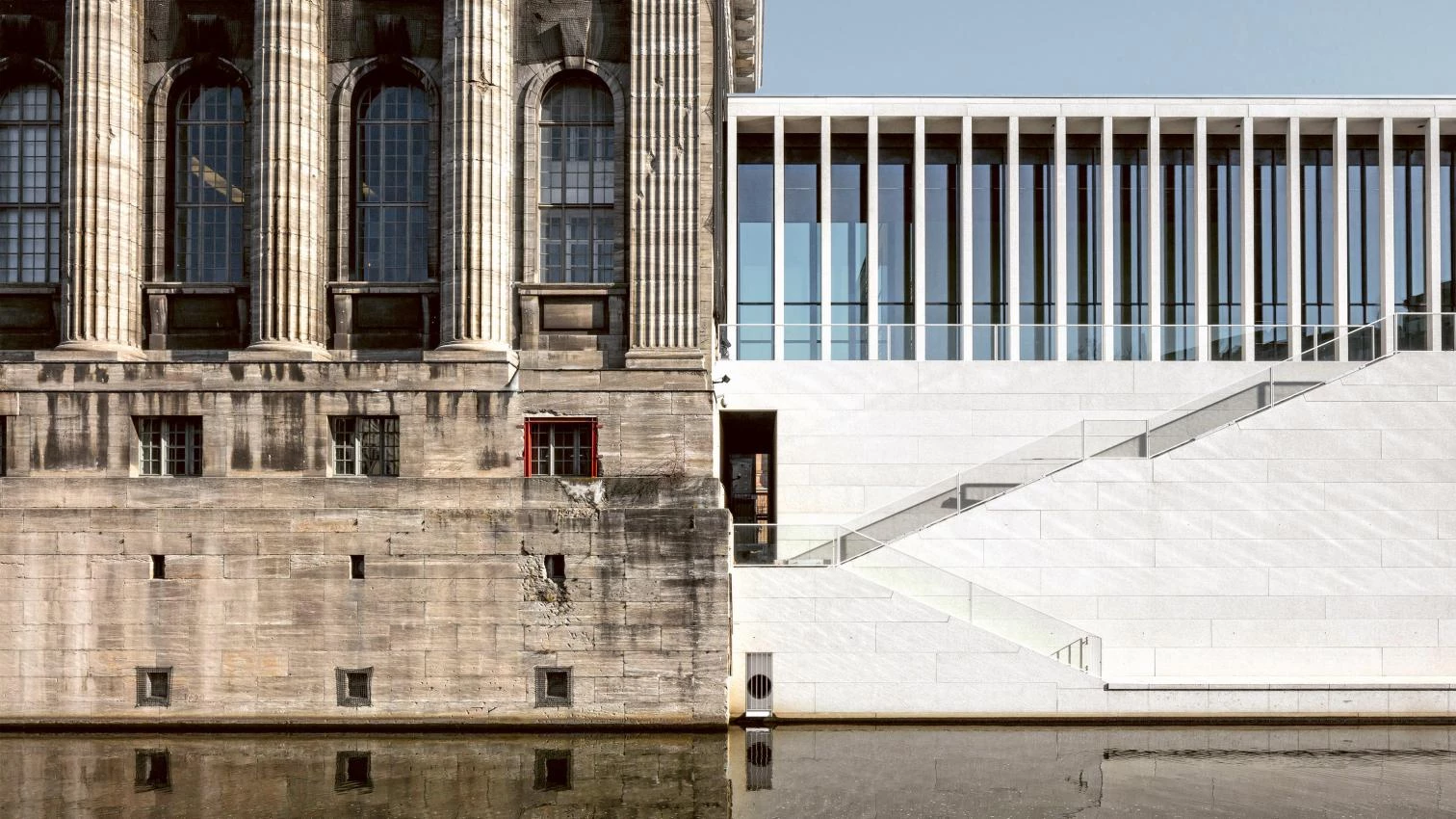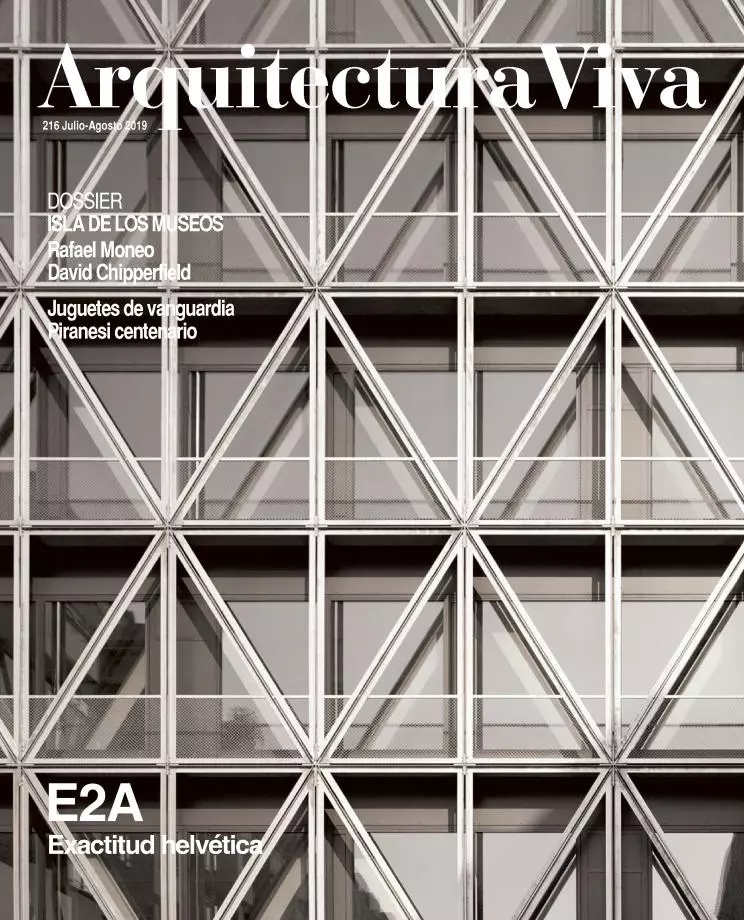
One consequence of German reunification in 1990 was collective acceptance of memories of the 20th century through a symbolic deed: Berlin’s reinstitution as capital of the State, and the subsequent restoration of a good part of its most emblematic buildings. Competitions were organized: in 1991, to turn the old Reichstag into a symbol of the new Germany, and two years later, to renovate the Neues Museum, a task which fell to David Chipperfield and was the first step towards a full revamp of Museum Island, the cultural acropolis sponsored by King Frederick William IV of Prussia which was partly destroyed during World War II. The process culminated this past 12 July with a nearly retiring Angela Merkel gracing the opening of the last piece of the complex, the James-Simon-Galerie, which serves as the new functional and symbolic gate into Museuminsel, and is also a Chipperfield work.
Embedded into one of the walls of the Spree River canal, the gallery is the most contemporary element amid many museums erected by notable architects in the course of the 19th century, but this was no hindrance to Chipperfield’s talent for engaging in dialogue with settings. Here he succeeded by way of the building’s sensible scale, the naturalness with which it is inserted into the built fabric of the island, and especially the symbolic subtlety of its elegant curtain of slender pillars, which continues the rhythm of columns of the eclectic monuments around. These features are highlighted by Rafael Moneo in a critique published in this issue of Arquitectura Viva.






